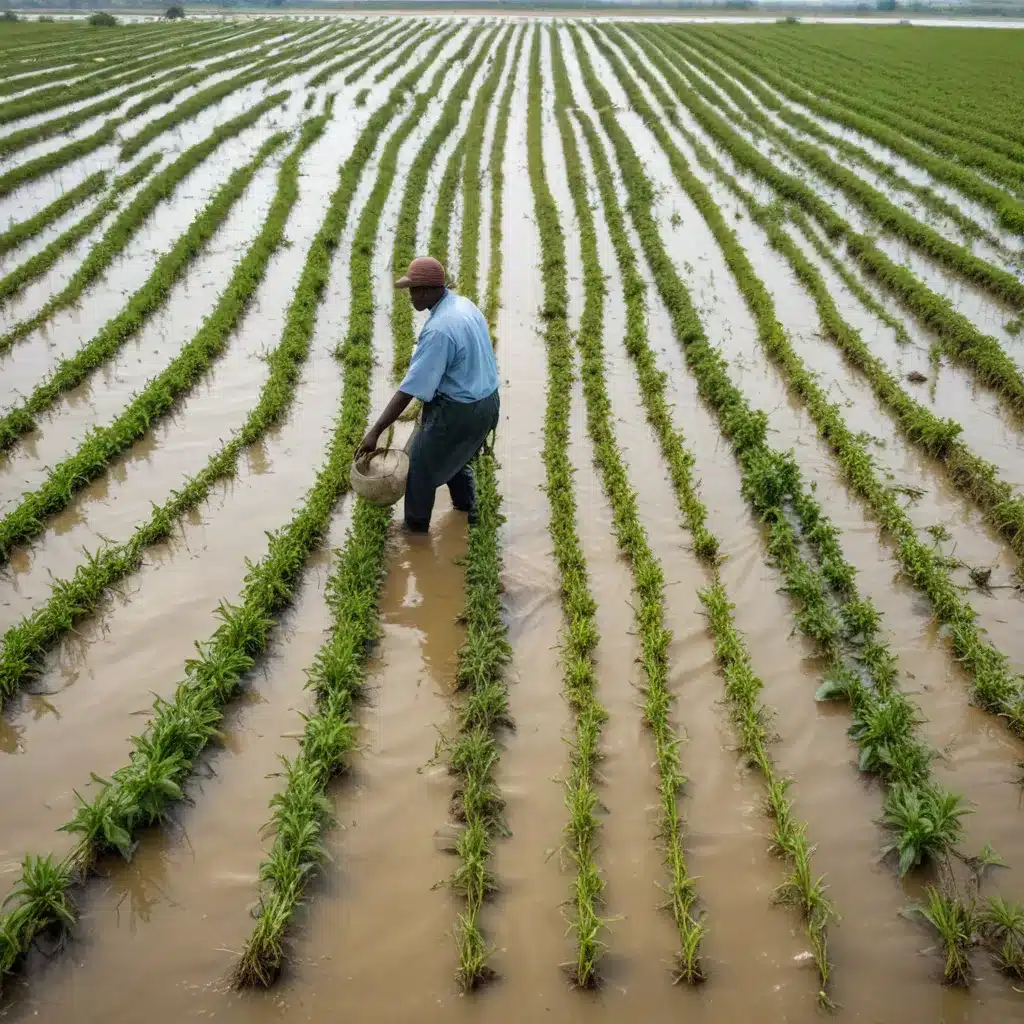
The Mounting Global Crisis at the Nexus of Climate, Conflict, and Hunger
The accelerating climate crisis and multiplying conflicts have created a global food crisis of catastrophic proportions. Over 330 million people were affected by acute food insecurity in 2023, driven primarily by the deadly nexus of climate change and conflict.
“A global food crisis is creating a hellscape of hunger and heartache for many of the world’s poorest people,” warned UN Secretary-General António Guterres. Climate change and conflict were the main causes of acute food insecurity for almost 174 million people in 2022. “Where wars rage, hunger reigns — whether due to displacement of people, destruction of agriculture, damage to infrastructure, or deliberate policies of denial.”
This intersection of climate, conflict, and food insecurity poses a serious threat to global peace and security. All 14 countries most at risk from climate change are also suffering from conflict. Droughts, floods, and violence are throwing supply chains into disarray, with 18 “hunger hotspots” facing acute deterioration.
“There is no food security without peace, and no peace without food security,” stressed Beth Bechdol of the UN Food and Agriculture Organization (FAO). Over two-thirds of the 258 million people facing high levels of acute food insecurity are impacted by climate change and conflict. Urgent action is needed to build resilient and sustainable food systems that can withstand these compounding crises.
Innovative Practices for Climate-Resilient Agriculture
Addressing the intersection of water, food security, and climate change will require a multi-pronged approach, combining both incremental and transformational adaptation strategies across the entire food system. Innovative agricultural practices that enhance sustainability, diversity, and community resilience will be key to ensuring food security in the face of a changing climate.
Agroecological Approaches to Build Resilience
Agroecological farming systems offer a promising pathway for adapting to climate change impacts. By maintaining species diversity across a range of productive niches, agroecological approaches can buffer against the effects of extreme weather events and climate variability.
Diversified cropping systems and traditional agroecosystems that grow a wide variety of crop varieties in spatial and temporal arrangements are less vulnerable to catastrophic loss. Integrating livestock, enhancing soil organic matter, and leveraging local genetic diversity can all contribute to building resilient food production.
Complementary strategies like ecological intensification, strengthening existing diverse farming systems, and investing in ecological infrastructure not only boost climate resilience, but also address key drivers of pollinator decline and biodiversity loss. Diversifying production systems is crucial for providing regulatory ecosystem services such as nutrient cycling, carbon sequestration, and water regulation.
Leveraging Indigenous and Local Knowledge
Indigenous and local knowledge (ILK) systems harbor invaluable insights for adapting to climate change impacts on agriculture and food security. Traditional farming practices like seed exchange networks, neglected and underutilized crop species, and community-based resource management can enhance the sustainability and resilience of local food systems.
Seed sovereignty initiatives that protect local agrobiodiversity and landraces are often more climate-resilient than commercial crop varieties. Seed banks and exchange networks can provide a crucial lifeline when harvests fail due to extreme weather.
Integrating ILK with scientific approaches can unlock innovative solutions. For example, neglected and underutilized species (NUS) can diversify diets, improve nutrition and economic security, and enhance climate resilience – yet they remain undervalued and underutilized. Combining traditional ecological knowledge with modern science can reveal the immense potential of these forgotten foods.
Diversifying Livelihoods and Production Systems
Diversifying livelihoods and production systems is a key strategy for building resilience to climate change impacts. Beyond just crop diversification, integrating livestock, aquaculture, and non-agricultural activities can help smallholder farmers spread risk and adapt to changing conditions.
In regions facing increasing water scarcity or crop failures, a shift from crop production to livestock-based livelihoods may be a necessary transformational adaptation. Complementary on-farm diversification, such as agroforestry, can further enhance the resilience of mixed farming systems.
Diversification not only strengthens the sustainability of food production, but can also translate into more diverse and nutritious diets at the household level. Promoting dietary diversity through a variety of locally-sourced foods is a powerful adaptation strategy with co-benefits for health and climate.
Enabling Policies and Institutional Support
Realizing the potential of these innovative agricultural practices will require robust enabling conditions and institutional support at multiple scales. Policies, markets, and governance frameworks must be aligned to incentivize sustainable, climate-resilient food systems.
At the global level, the United Nations Framework Convention on Climate Change (UNFCCC) plays a crucial role in coordinating international climate action. The UNFCCC can forge partnerships, share knowledge, and provide guidance on integrating climate adaptation into food security initiatives.
Nationally, governments must prioritize climate-smart agriculture in their policy agendas, investing in research, extension services, and infrastructure to support farmers in the transition. Coupling agricultural development with climate adaptation strategies will be essential.
At the community level, inclusive, participatory approaches that engage smallholder farmers, Indigenous Peoples, women, and youth are vital. Strengthening local institutions, cooperatives, and community-based organizations can empower marginalized groups to lead adaptation efforts.
Innovative financing mechanisms, such as climate insurance, disaster risk reduction funds, and carbon payment schemes, can also catalyze the adoption of climate-resilient practices. Blending public and private sector investments will be crucial to scaling up these solutions.
Conclusion: Forging a Resilient Future
The mounting global crisis at the intersection of climate change, conflict, and food insecurity demands urgent, coordinated action. By embracing innovative, agroecological approaches, leveraging indigenous knowledge, and diversifying food production systems, we can build resilient and sustainable food systems capable of withstanding these compounding challenges.
Underpinning these efforts must be enabling policies, markets, and institutions that incentivize climate adaptation, environmental stewardship, and equitable access to resources. Only by addressing the root causes of vulnerability can we achieve lasting food security and create a more resilient future for all.
The time to act is now. Let us harness the power of regenerative agriculture, traditional ecological wisdom, and collaborative governance to tackle the global food crisis head-on and secure a sustainable, hunger-free world.

